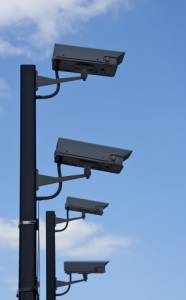It's no secret  that high-quality machine vision cameras are perfect for use in industrial inspection and quality-control applications. They've also proven their worth in various surveillance applications that require fast data transmission and no-nonsense interoperability. Regardless of the field in which they're being used, GigE machine vision cameras are known for their ability to adapt to changing conditions and faithfully record data in the face of adversity.
that high-quality machine vision cameras are perfect for use in industrial inspection and quality-control applications. They've also proven their worth in various surveillance applications that require fast data transmission and no-nonsense interoperability. Regardless of the field in which they're being used, GigE machine vision cameras are known for their ability to adapt to changing conditions and faithfully record data in the face of adversity.
These properties make industrial cameras a natural choice for low-light traffic and surveillance operations that require constant monitoring in a wide range of conditions. As more municipalities and transportation departments use building-mounted and post-mounted cameras to monitor crowds and capture images of moving traffic, they'll rely on next-generation industrial cameras that accurately capture and transmit important images on an automatic, real-time basis.In the past, surveillance and traffic cameras produced slow, low-quality images that were of limited use. Their grainy, monochromatic photographs of license plates or faces were often insufficient for the purposes of law enforcement agencies and traffic-flow experts. Their already limited usefulness declined precipitously at night or during inclement weather.
These days, professional-grade machine vision cameras use CCD and CMOS technology to produce accurate, adaptable recordings of roadways, city streets and other public spaces. The best devices use lightning-fast GigE interfaces to transmit captured images from on-site cameras to PC-based image processing systems wirelessly or via standard Ethernet cables. Since the GigE standard makes it easy to network multiple devices, users can compile real-time information from widely distributed cameras to respond quickly and decisively to changing traffic or security conditions.
Traffic cameras are subject to unique stresses, demands and environmental hazards. In addition to the fast, easy-to-use GigE interface that underpins the most successful of these devices, machine vision traffic cameras use flexible, highly dynamic range controls that allow for clear image grabs in ranges of 100 dB or more. As such, they're capable of capturing a multi-car section of freeway or an entire arterial intersection in a single shot.
Additionally, the best machine vision traffic cameras use adaptable color filters and automatic brightness controls that sharpen their resolution and avoid excessive washing in bright conditions. Conversely, high sensitivity to light and internal lighting apparatuses make them a natural choice for traffic monitoring at night and in foggy, rainy or snowy conditions.
These attributes allow machine vision traffic cameras to tackle a dizzying range of tasks. Their dependable, continuous connections to image processing servers allow for real-time, full-color video monitoring on an ongoing basis. In congested areas that experience regular traffic jams and frequent accidents, this is essential for transportation authorities and law-enforcement agencies that need to respond to such problems as quickly as possible.
Meanwhile, high-speed capture processes and powerful zoom capabilities make industrial cameras a natural choice for traditional and next-generation law enforcement activities. Agencies across the country now use reliable industrial cameras from firms like JAI, Sony & Dalsa to monitor HOV and bus lane compliance, penalize toll evaders and light-runners and even find speeders long after they've moved on from an area. In fact, these manufacturers and others offer a surprisingly broad range of off-the-shelf items as well as customized traffic camera solutions for demanding clients.
No matter what your traffic and public-area monitoring operation entails, don't put your trust in obsolete technologies that can't capture, process and transmit high-quality, light-sensitive images in real time. With industrial machine vision cameras from well-regarded manufacturers, you'll solve your lighting challenges and enjoy a new monitoring and surveillance standard.

